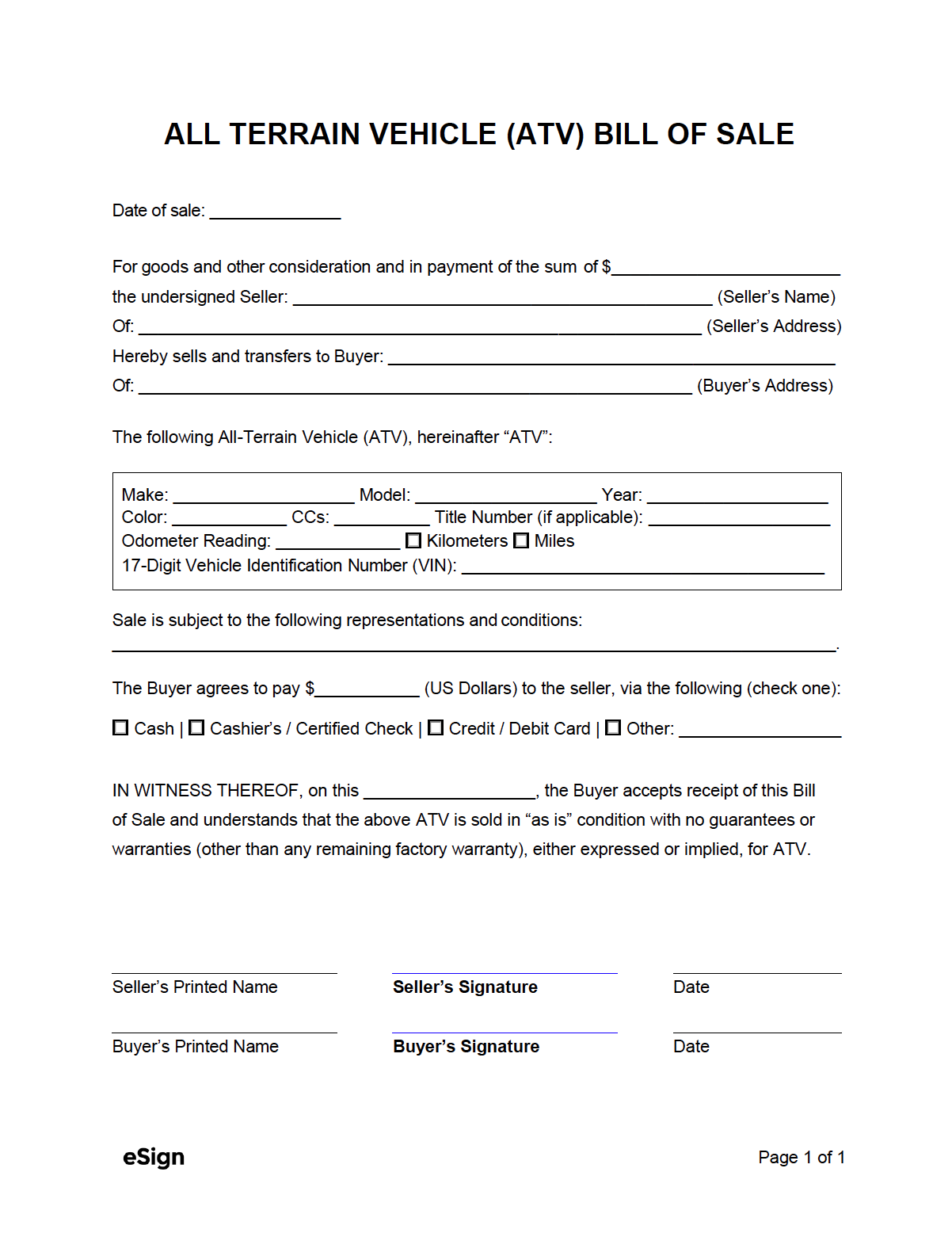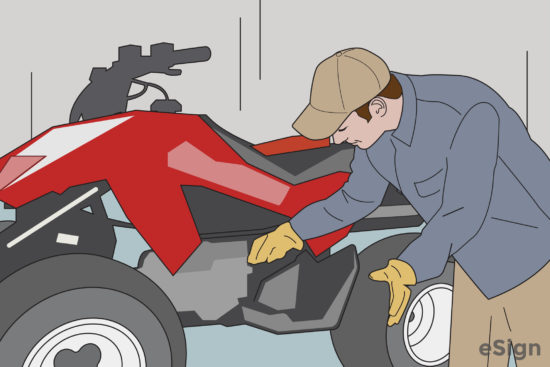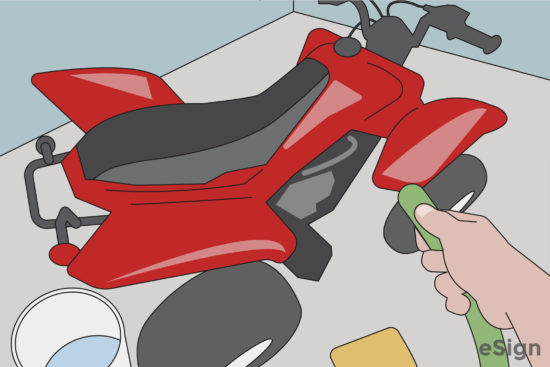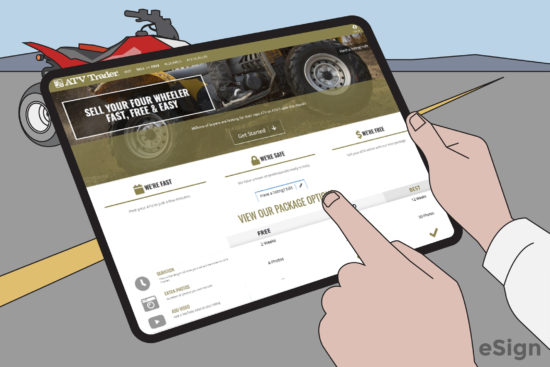Document Features
- Legal Language – Contains all the necessary language to make the transaction between the parties legally binding.
- Party Information – Clearly states the names and addresses of both the seller and the buyer.
- ATV Information – Includes a description of the ATV being sold, such as make, model, year, etc., so it can be clearly identified.
- Conditions – Provides a list of conditions that must be met before the sale is completed, as long as the parties agree to them beforehand.
- Price – Specifies the exact price the buyer will pay the seller for the ATV, as well as the payment method.
- Signatures – Authorizes the sale as a legal transaction by requiring both parties to sign the form.
How to Sell an ATV (5 Steps)
Step 1 – Inspect the ATV
Giving the ATV a full inspection will allow the owner to identify any obvious damage. It is recommended to remove all coverings, check the battery terminals, look for cracks in the tires, test the shocks (look for leaks), and check the oil.
The seller may want to give the ATV a test drive to observe the suspension, run through the gears, and listen for any odd sounds.
Step 2 – Make Necessary Repairs
An ATV in good working condition will generally sell for more than one that needs repairs.
The most common maintenance for four-wheelers includes:
- Oil and filter change
- Valve adjustment
- New spark plugs
- Cable adjustment
- New brake pads
- Cleaned, adjusted, and lubed chain
- Coolant flush
- New shocks
Step 3 – Clean it
An ATV can be cleaned like a car. A bucket with lukewarm water, a sponge or brush, a paint-safe soap, and a means of rinsing. Overall, the owner should:
- Rinse off any large particles of dirt and other debris.
- Soak the entire ATV.
- Scrub the entire ATV with a soapy brush or mitt.
- Rinse it off.
- Towel dry.
Step 4 – Create a Listing
An online listing for the vehicle will need to be created, including photos. Unless the owner specifies that negotiation is off the table, they should be prepared to receive offers between 5% and 20% less than the selling price.
The best information for pricing can be found by looking at what similar ATVs have sold for in the area.
Step 5 – Negotiate + Finalize the Sale
Unless the owner is shipping the ATV to the buyer, they should be prepared to have potential buyers inspect the ATV in person.
If a buyer is interested, they will make an offer. The owner can then counteroffer with a higher price, accept the buyer’s offer, or agree to the price on conditions, such as immediate purchase.
Once the seller receives the funds for the ATV, they can put together the required paperwork:
- Bill of sale – needs to be signed by the seller and buyer
- ATV’s title – signed over to buyer
- Any maintenance records
Sample
Download: PDF, Word (.docx), OpenDocument
ATV BILL OF SALE
For goods and other consideration and in payment of the sum of $[AMOUNT], the undersigned Seller: [SELLER NAME] of [ADDRESS] hereby sells and transfers to Buyer: [BUYER NAME] of [ADDRESS]:
Make: [MAKE] Model: [MODEL] Year: [YEAR]
Color: [COLOR] CCs: [CCs] Title Number (if applicable): [TITLE NUMBER]
Odometer Reading: [ODOMETER READING (MILES)] VIN: [VIN]
The Buyer agrees to pay $[AMOUNT] (US Dollars) cash to the seller.
IN WITNESS THEREOF, on this [MM/DD/YYYY], the Buyer accepts receipt of this Bill of Sale and understands that the above ATV is sold in “as is” condition with no guarantees or warranties (other than any remaining factory warranty), either expressed or implied, for ATV.
Seller Signature: _______________________ Date: [MM/DD/YYYY]
Printed Name: [SELLER NAME]
Buyer Signature: _______________________ Date: [MM/DD/YYYY]
Printed Name: [BUYER NAME]






